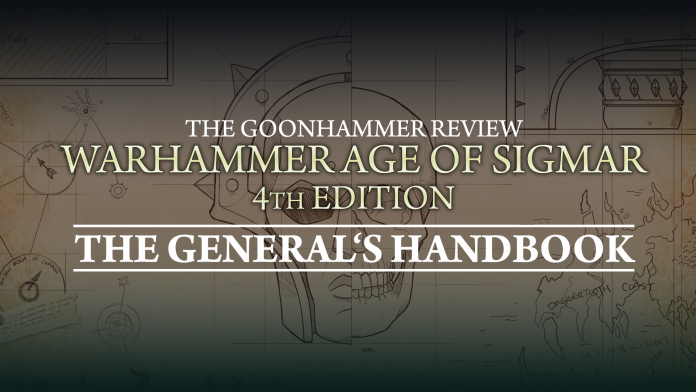Thanks to Games Workshop for sending us these rules and the Skaventide box set for review. Over the coming weeks, we will be having experts provide insight into how they are building and running lists with each faction in Age of Sigmar. For this overview, we’re looking at what stands out for each faction, how much has changed, and how we might approach some key challenges on the tabletop.
Overview
In third edition, the Generals Handbooks (or GHB as it is often referred to) served up some hefty changes every six to twelve months. These changes would shake up both competitive and more casual metas whether international or local, shifting the strength of different armies and what units you might field. We started off with a “Monster” heavy GHB that was pretty even footed, without benefiting monsters too much and ended with a “Magic” GHB that resulted in a player base with strong opinions on the spell “Blizzard”.
Bair: Hi it’s me, Fyreslayer-turned-Gitz player with strong opinion on Blizzard, how much Fyreslayers struggled the last 12 months, and how insanely strong the Gitz book ended up being. It was great. No regrets.
This GHB is very light keeping both Core and Advanced rules in place allowing players to get accustomed to the new edition. This GHB’s rules give players battle tactics to score, six generic and two grand-alliance specific ones, as well as Honour Guard. One unit in your General’s regiment becomes their Honour Guard granting one of three abilities for the game. You get to choose all of this during deployment but most players will typically have one in mind when writing their list.
Honour Guard Abilities
Special Assignment – Pick a friendly unit in your generals regiment that is not your general. Your non-Companion weapon gain an additional rend for one of the following:
- Anti-Infantry
- Anti-Cavalry
- Anti-Monster
- Anti-War Machine
- Anti-Beast
Priority Target – Pick a friendly unit in your generals regiment that is not your general. Add 1 to hit and wound rolls that target the enemy general’s regiment.
Bodyguard– Pick a friendly unit in your generals regiment that is not your general. Subtract 1 from from Attacks Characteristics of units within your General’s combat range if the Honour Guard did not charge and is wholly within 6″ of your general.
This is a fantastic set of simple rules that have a big impact on the game and allow flexibility for more competitive players. The list building system last edition forced these types of choices during list building and prevented players from making adjustments at events when a skew matchup occurred; then chances of running into someone running an amusing skew list at an even is very high.
Now, if somebody decided to run “oops all knights” or is running a minimum drop list with many units in the General’s regiment you can pick your extra point of rend or the priority target ability accordingly. On the other side is considering just how many units you do put in your own General’s regiment. You can have up to four units but handing out an easy +1 to hit and wound against them from what could be a very scary unit (Varanguard, Rockgut Troggoths, Hearthguard Berzerkers, etc) might end up being a bad choice.

Battle Tactics
There’s six universal tactics everyone gets to choose from and then two per grand alliance. This is now the last vestige of the idea of a grand alliance since being full army lists at Age of Sigmar’s inception in 2015. You choose one at the start of your turn to score by the end of your turn but if you choose to take a double-turn, meaning you won the priority roll and made the choice to take the next turn after going second in the previous battle round, you cannot pick a battle tactic to score! These are worth four points each, so can be a significant cost to skip.
Universal Battle Tactics:
Do Not Waver: Complete this battle tactic if two or more friendly units fought and no friendly units were destroyed.
Take Their Land: Pick a terrain feature wholly or partially within enemy territory and wholly outside friendly territory. You complete this tactic if you control that terrain feature at the end of your turn.
Slay the Entourage: Pick a unit in the enemy general’s regiment. You complete this battle tactic if that unit is destroyed this turn.
Attack on Two Fronts: You complete this battle tactic if you control two or more objectives that you did not control and at least one of those objectives was controlled by your opponent.
Seize The Centre: Have two or more friendly units within 3″ of the centre of the battlefield and not in combat.
Take The Flanks: Have a unit within 6″ of each short battlefield edge that were not set up and not within friendly territory.
The only really easy one turn one here is Seize the Centre since it’s not “wholly within” you only need to touch it with the slimmest amount of base. Otherwise Take the Flanks and Take Their Land (especially with the setups provided as recommended) are solid for armies with faster units to grab. What’s nice is that very few require you to choose units that you’re going to be scoring them with in the hero phase so you can set up contingencies and not be relying on a single Run roll to score. We can see a meta developing where a non-general regiment is used to get seize the centre and take the flanks to prevent unlocking Slay the Entourage and keep those honour guard bonuses away from key units.
Faction specific battle tactics are gone! Yay! No longer do we have to deal with the haves and have-nots of last edition. While some factions are going to have an easier time getting these tactics (those that can move quickly without being set up) every faction should be able to build into six or seven achievable tactics. In test games we’ve had a variety of outcomes but as you put together a list you should think about having two tactics that aren’t Seize the Centre that you can achieve in the first battle round. On many of the maps that is going to require one or two quicker-moving scout-type units like Aether-wings; some things just never change.
Order Tactics:
Reclaim the Realms: Complete this if you have 1 or more friendly units wholly within each quarter and more than 6″ from all enemy units.
Slay The Tyrants: Complete this tactic if an enemy Hero was slain by a combat attack.
So one of these is going to happen in most games (Slay the Tyrant) and the other will take a bit of thinking to score, mostly by having very quick units or ones that can teleport/deepstrike; Kharadron Overlords love it. You only have to be in every quarter, there’s no distance apart from other quarters so a single hero who’s base is just over the line does it for you without issue. Getting this later in the game is trickier as your depleting number of units need to be standing on objectives and most likely in combat.
Chaos Tactics
Offering of Carnage: Destroy two or more enemy units. Simple. No notes.
Ordained Charge: Pick an objective controlled by your opponent. Complete this if two or more friendly units charged and one of those is contesting the objective, and you control it.
Offering of Carnage is going to be pretty easy to set up against some armies and has the benefit for Chaos players of not specifying how the units must die. Ordained Charge seems to be a fine tactic that just relies on making a charge – what are you going to do, fail multiple charges in a turn?
Death Tactics
Marked For the Grave: Pick a non-Hero enemy unit that hasn’t had models slain. Complete this battle tactic if it is destroyed this turn. If there are no non-hero enemy units you can pick any unit.
Inevitable Demise: Complete this tactic if two or more friendly units are wholly within enemy territory, more than 9″ from all enemy units, and were not set up this turn.
These seem fine? Marked For the Grave will be great against armies with weaker support units and Inevitable Demise feels like a combination between “Seize the Centre” and “Attack on Two Fronts”. That one will be situationally easier to score against more elite enemy armies that aren’t sprawled out over the board playing a board-control game. Situational tactics are fine, Death armies typically won’t be struggling for the basic ones.
Destruction Tactics
Time to Get Stuck In: Pick three units not in combat that are wholly within friendly territory. Complete this battle tactic at the end of your turn if each of those units is wholly outside your territory and used a Fight ability this turn.
The Kunnin’ Approach: Pick an enemy unit that is in combat and a friendly unit that is not in combat. You complete this tactic at the end of your turn if that unit was in combat with the enemy unit this turn and that unit was destroyed this turn.
Time To Get Stuck In gets worse the more you look at it and is just incredibly situational. Battleplans where half the table is your territory is going to be by far the easiest ones to score this on, and even then not the easiest to pull off. This is made up for with The Kunnin’ Approach, a straightforward tactic that rewards dog piling a unit which Destruction armies typically do really well.
Marchettus: Each of these feels like it has an “easy” tactic and a “hard” tactic and there is a lot of interactivity with redeploy and countercharge to disrupt them
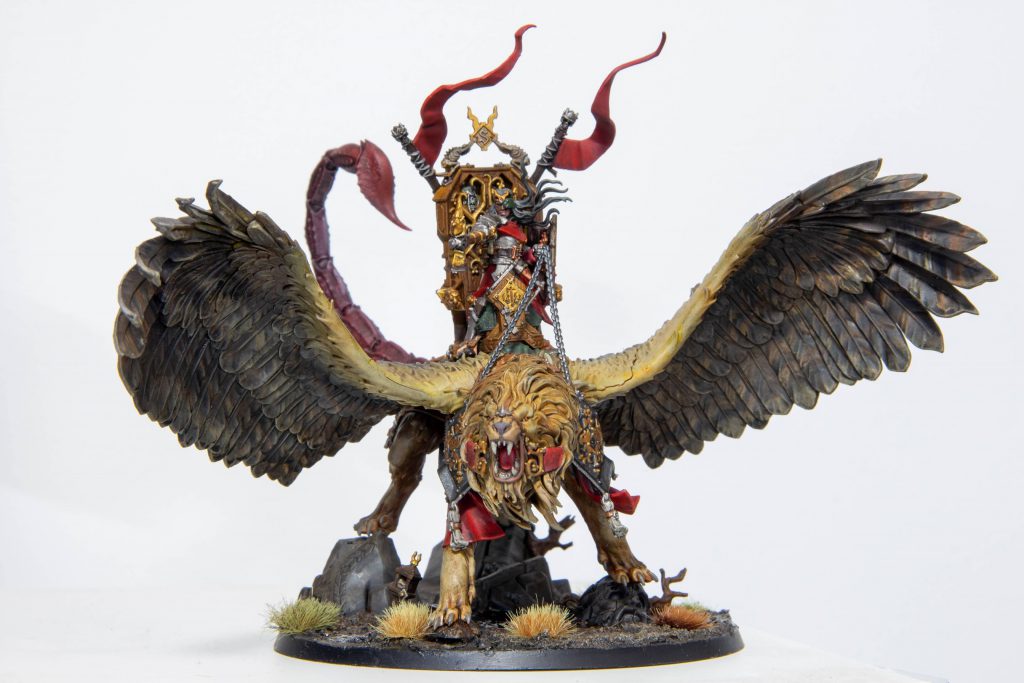
The Battleplans
Missions shoot for a clean max score of 10 per round, likely so it’s easier to do the math in your head how close you are the to maximum score of 50 over 5 rounds. For returning players to this edition: no more grand strategies!
What’s New?
Although the battleplans are a collection of the designer’s favourites from the past, they aren’t here as one-to-one recreation. A couple of factors necessitated changing them including:
- Deployment Zones – Sigmar didn’t have nice and neat 4 x 4 grids to outline deployment until third edition, as a result there were some wonky deployments that have been mercifully streamlined. The maps are also a bit smaller than before, but the general ratio has been preserved.
- Scoring – The sacred scoring of Hold One, Hold Two and Hold More is a fairly recent idea and although not every mission uses it, missions tended to be a bit more ad-hoc with scoring in the past. Scoring is a lot more consistent now in most cases.
- Twists – Fourth edition introduces Twists, an advantage granted to the person who is behind in scoring. Some of these are things that existed but would be handed out for different reasons (like going second) or are new bonuses entirely.
- Ill-advised game design – Some of the original stabs at the missions just weren’t the greatest. There were some good ideas there but they needed to be workshopped a bit. Game design has improved a lot since 2016 so there was some real space to represent the general thrust of the mission in a new way.
Border War (2016)
This is it, one of the OG mission way back in the original General’s Handbook. It’s a solid mission that updates quite cleanly, and was revisited in 2021’s Savage Gains.
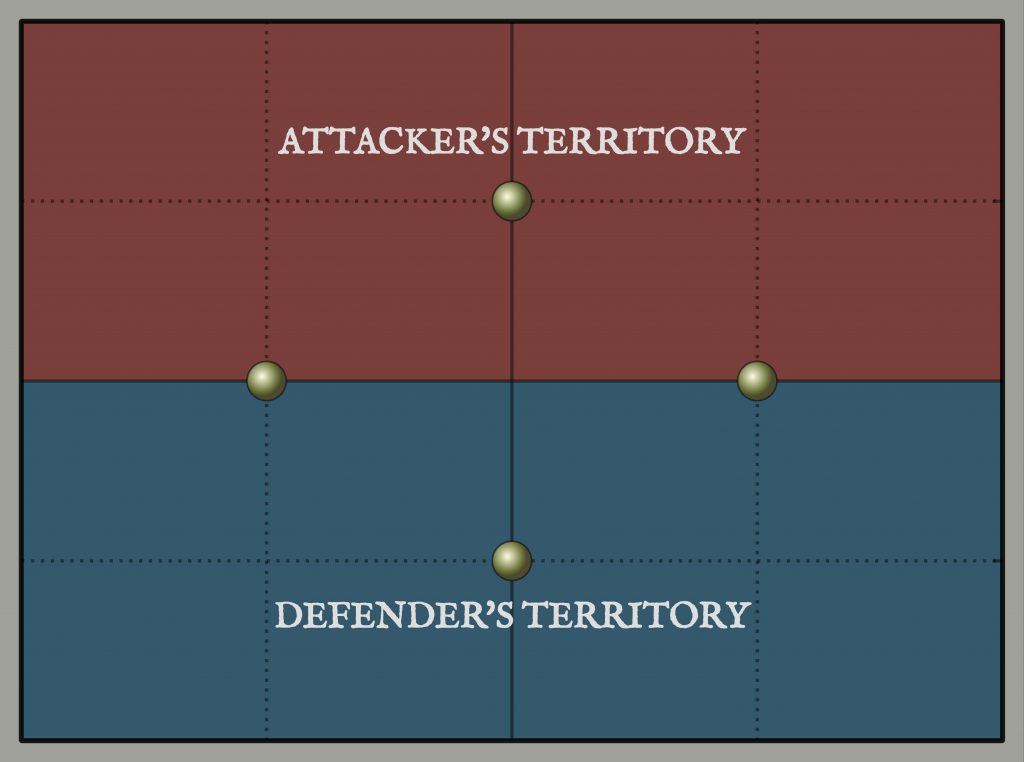
There are 4 objectives, holding your own is worth 1 point, each border objective is worth 2 points and your opponent’s is worth a whopping 5 (up from 4 in the original publishing). Ultimately though you are capped at 6 points, plus your battle tactic so you can’t really run away with the game. If anything, you want to be prudent and not overextend yourself too much trying to grab points.
The Twist: The underdog gets +1 to hit if they charged this turn, incentivizing taking a more bold last second push to their enemy’s objective to come back from behind.
Focal Points (2018)
Not to be confused with the one in the 2020 General’s Handbook. Completely different mission.
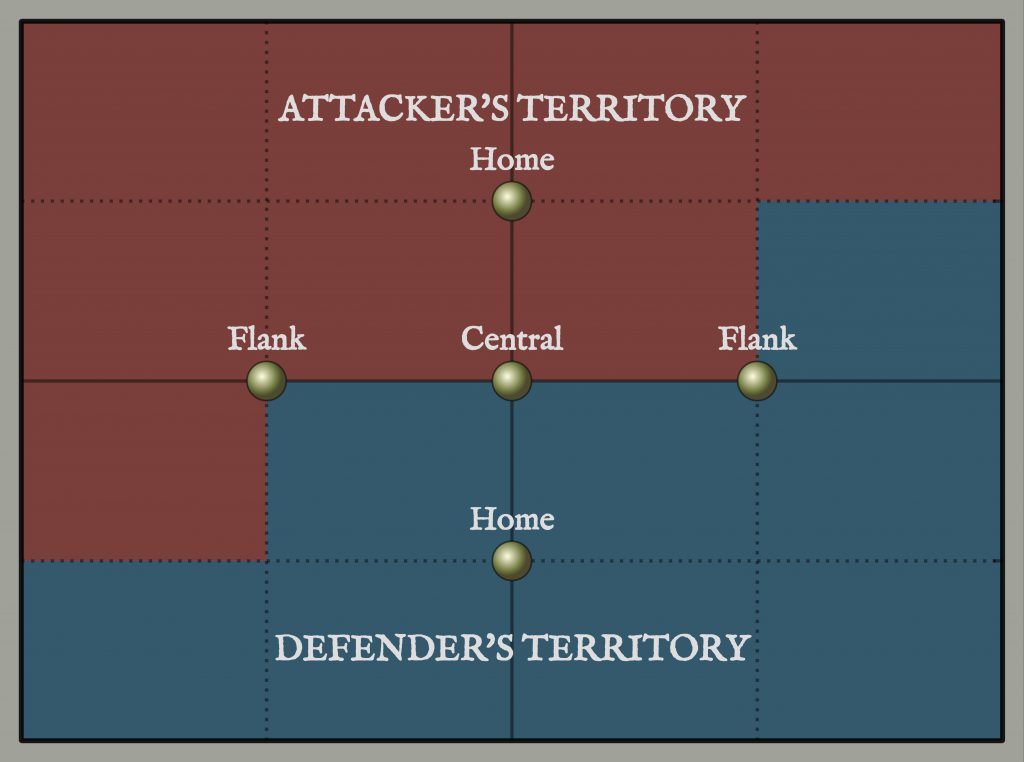
The general thrust of this mission stays the same, the goal is to capture objectives that are across from each other on the center cross. The objectives are named Home and Flank instead of numbered (which honestly makes the whole thing easier to conceptualize) but the scoring is very different now. There is a one, two, more mechanic and then an additional 3 for holding one of the crosses. Do you go wide for the easier to grab flanks or push into your opponent’s home territory to deny it?
The Twist: The underdog can change the central objective to either a home or flank objective. They only need to hold 2 of the same kind of objective to score 3 points so they can consolidate onto objectives much closer together.
Starstrike (2019)
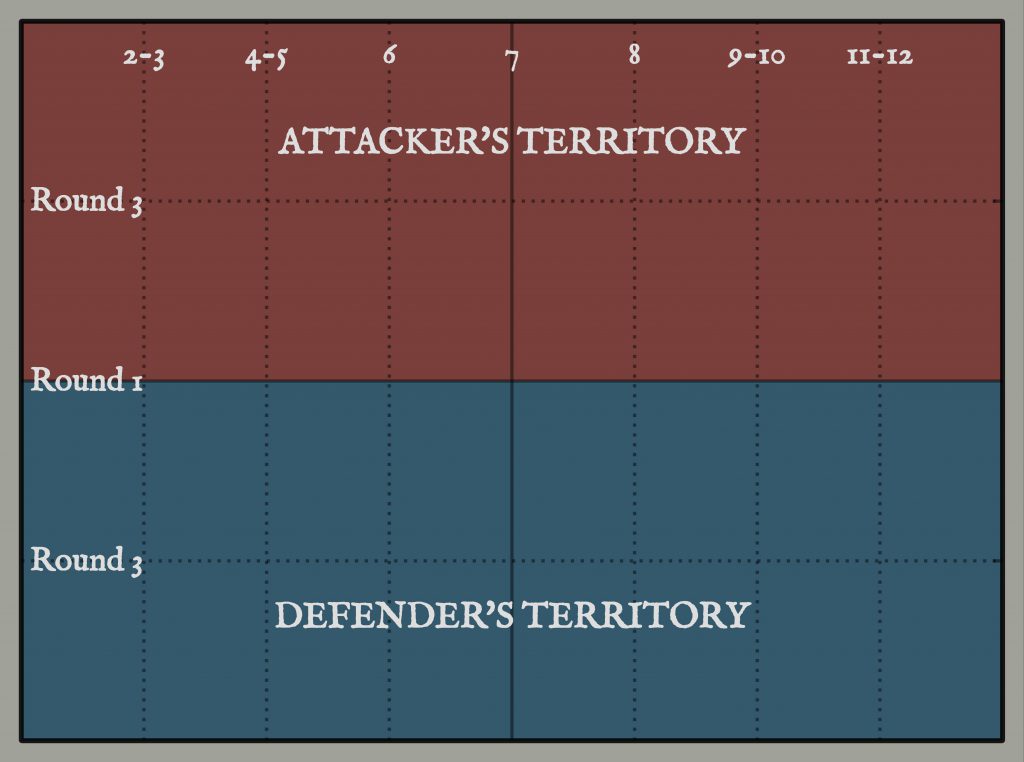
This is one of those missions where the general thrust remains the same but a lot is modified around it. There are technically fewer places to land, but that likely comes from acknowledging that rolling a 2D6 is a bell curve and you have more ways to roll a 6, 7 or 8 than you do anything else so those get their own lane while everything else shares.
In addition, they also acknowledged that you cannot put objectives on terrain pieces so instead of playing an objective marker, if it would hit terrain that terrain piece becomes the objective.
Scoring is also substantially different, no longer do they tick up as the game goes on but there is a simple 3 points for holding an objective and 3 for holding more than your opponent.
Shifting Objectives (2020)

This map has A LOT of empty space and I can see it being included in a lot of packs just because of the deployment flavor. In the suggested terrain deployments each side has a medium obscuring and place of power. Each battle round the active player determines which objective is worth two points, and the others are worth a single point. If you control more objectives than your opponent you get an additional two points.
The underdog is able to make the active player re-roll the dice to determine which objective is the primary objective.
Feral Foray (2021)
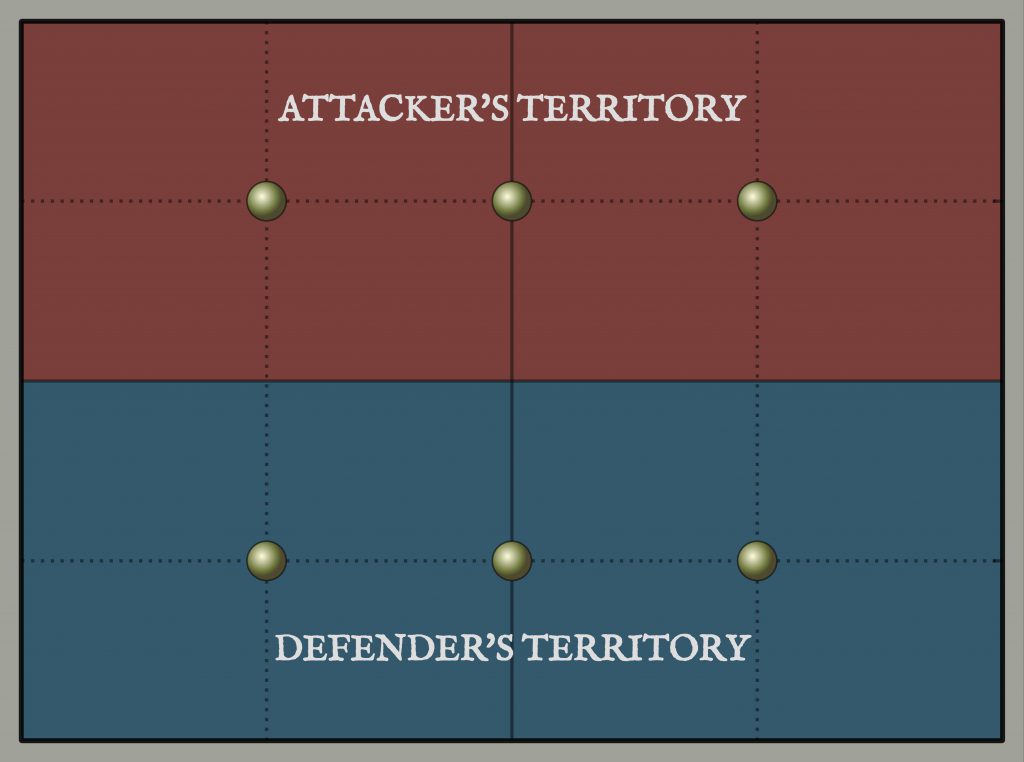
Simple setup with six objectives and no modifications to scoring. While it might seem like this could become a stalemate the twist and underdog rule really reward you for attacking. Going second and breaking a stalemate with a scout unit is going to be extremely worthwhile.
The Twist: At the start of the battle round each player can raid an enemy objective they control. This objective cannot be contested or controlled this battle round. The underdog can raid an objective in enemy territory they contest but do not control.
Jaws of Gallet (2022-2023 S2)

Easily one of my favorite missions in the history of the game. 5 objectives with Hold One, Hold Two, Hold More scoring. Then, each turn after the first an objective collapses.
The Twist: Starting on round 2, the Underdog gets to pick an objective to pull if they wish. If there is no underdog, nothing gets pulled.
Previously it was whoever went second, and it’s debatable if this is better because it makes it more like limited resources and robs players of a difficult choice on when to take the double turn (Something already compounded by not getting a battle tactic). My biggest concern is it may encourage deliberately coming up one objective short just to push the game in the direction better for them.
Battle for the Pass (2017)
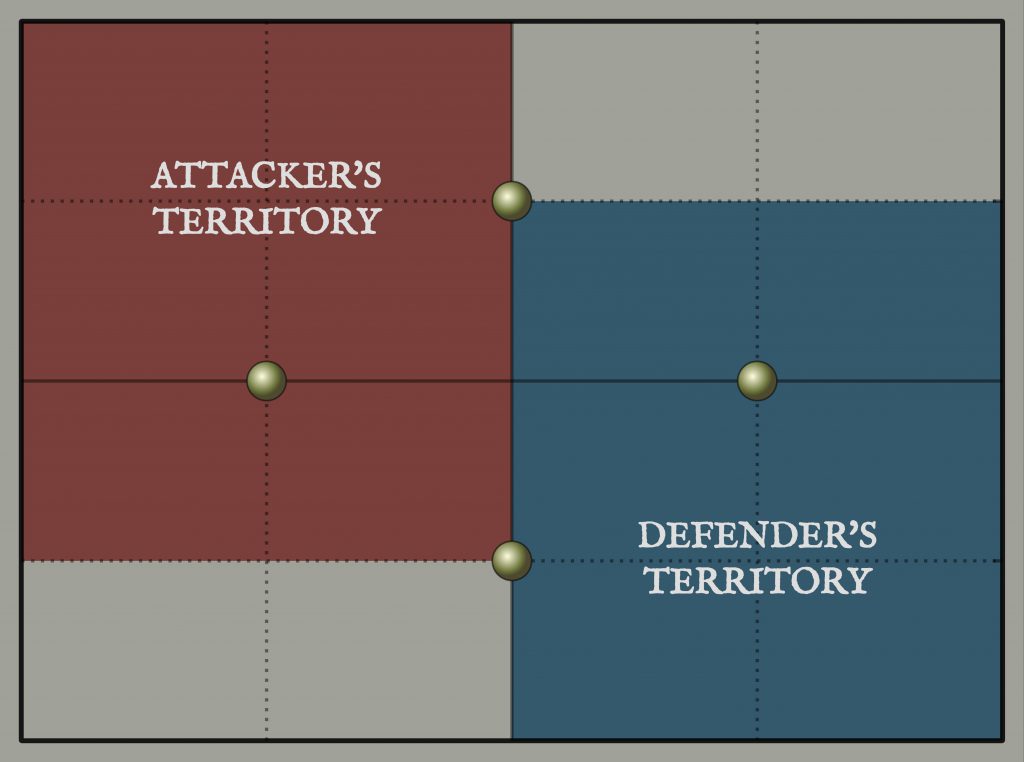
Identical to Border War for scoring purposes, holding your own is worth 1 point, each border objective is worth 2 points and your opponent’s is worth 5. It does utilize a short edge deployment instead of a long edge, so armies will have to hike further up the field than they would in Border War.
The Twist: +2 to control score for non hero units, which allows pushing up with smaller forces in a way that’s less directly lethal than in Border War’s +1 to hit but can allow them to remain out of combat if they want to tank on the circle instead.
Scorched Earth (2019)
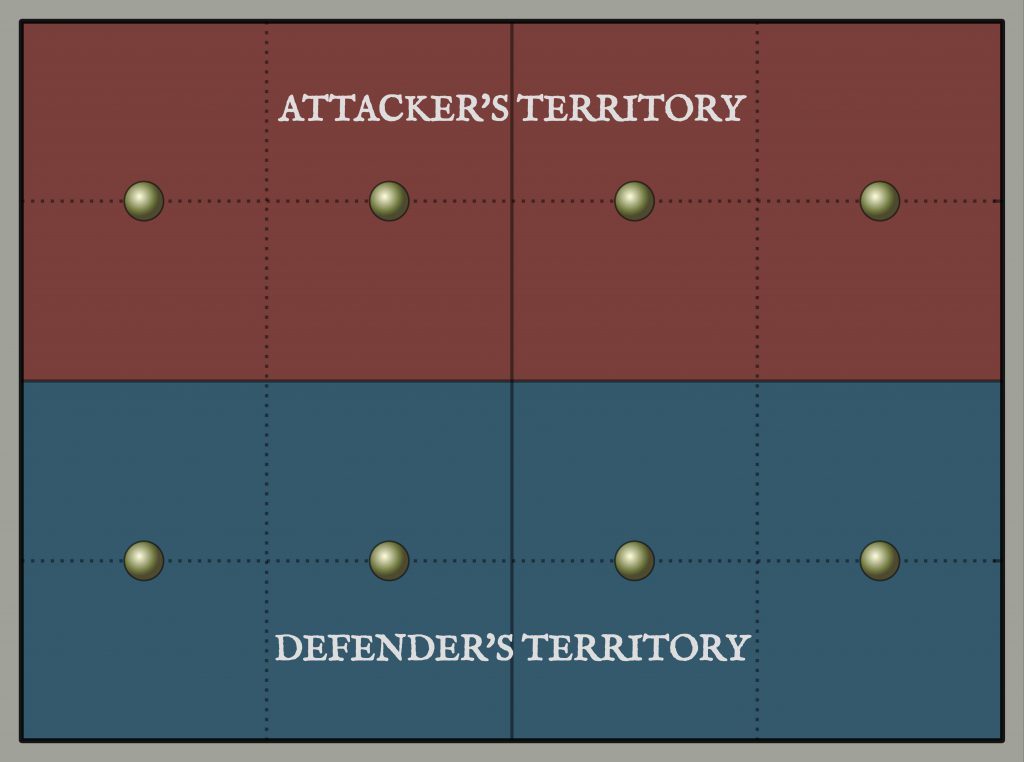
Simple Hold One, Hold Two, Hold More scoring. This one barely resembles the original. For some reason deployment is completely different here? The original mission had players take the long edges instead of the short edges.
The Twist: The underdog can choose one of the objectives in their territory that they control and enemy Control score counts as 5 less. This forces opponents to commit more forces that they might otherwise to capture an objective.
The original version of the mission let you gain D3 victory points for burning an opponent’s objective but since we can’t really break the 10 points per turn rule, denying an opponent a chance to gain ground is pretty good.
The Better Part of Valour (2020)

While there is no change in scoring and another six objective plan this map has a wild twist. Each time an enemy unit contesting an objective is destroyed by a fight ability by a friendly non-hero it gains the Dominant keyword until it is no longer contesting that objective. That unit, until it is no longer contesting that same objective, gains 10 to its control score. The underdog gains +1 to hit against dominant units.
The Vice (2021)
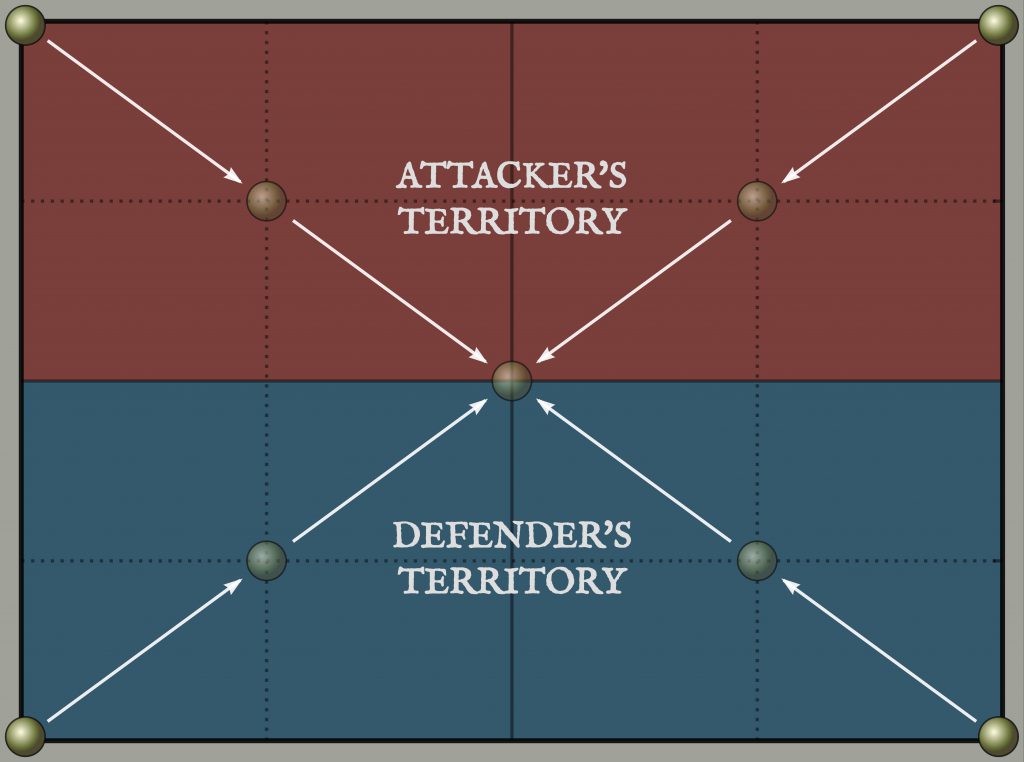
One of the best and most plans received a good redesign to deploy on the long edges. The original was a little spoiled by the presence and popularity of dragons but the idea of a map where everyone is coming to the middle to fight is great. The underdog can pick a single objective and inflict D3 mortal damage on each unit contesting it at the end of their turn. The twist is that at the start of the second round the objectives are removed and a new objective is set up. Then, at the Fourth battle round the remaining objectives are removed and then a single objective in the middle is set up. Since these are new objectives control has to be established at the end of each turn and if a Kraken-eater kicks the objectives they still get set up in the same place.
Close to the Chest (2022-2023 S2)

Having a small bit of neutral territory give a little flavour to this map. Scoring is influenced by the twist that has the none-active player select an objective in their territory to be the primary objective. Holding a single objective is worth 1 point, holding the second is worth 1 point, and holding the primary objective is worth 2 points with an additional two points for holding more than your opponent. The underdog can roll a dice and on a 5+ force their opponent to pick a different objective to be the primary objective.
Limited Resources (2023)

Scoring objectives isn’t changed with the familiar hold 1, hold 2, hold more mechanic. The twist is the same as what we’re playing with a player losing the ability to control an objective if controlled it at the end of their turn. The underdog can add 3 to the control scores for friendly units that are contesting an objective from which they are extracting resources.
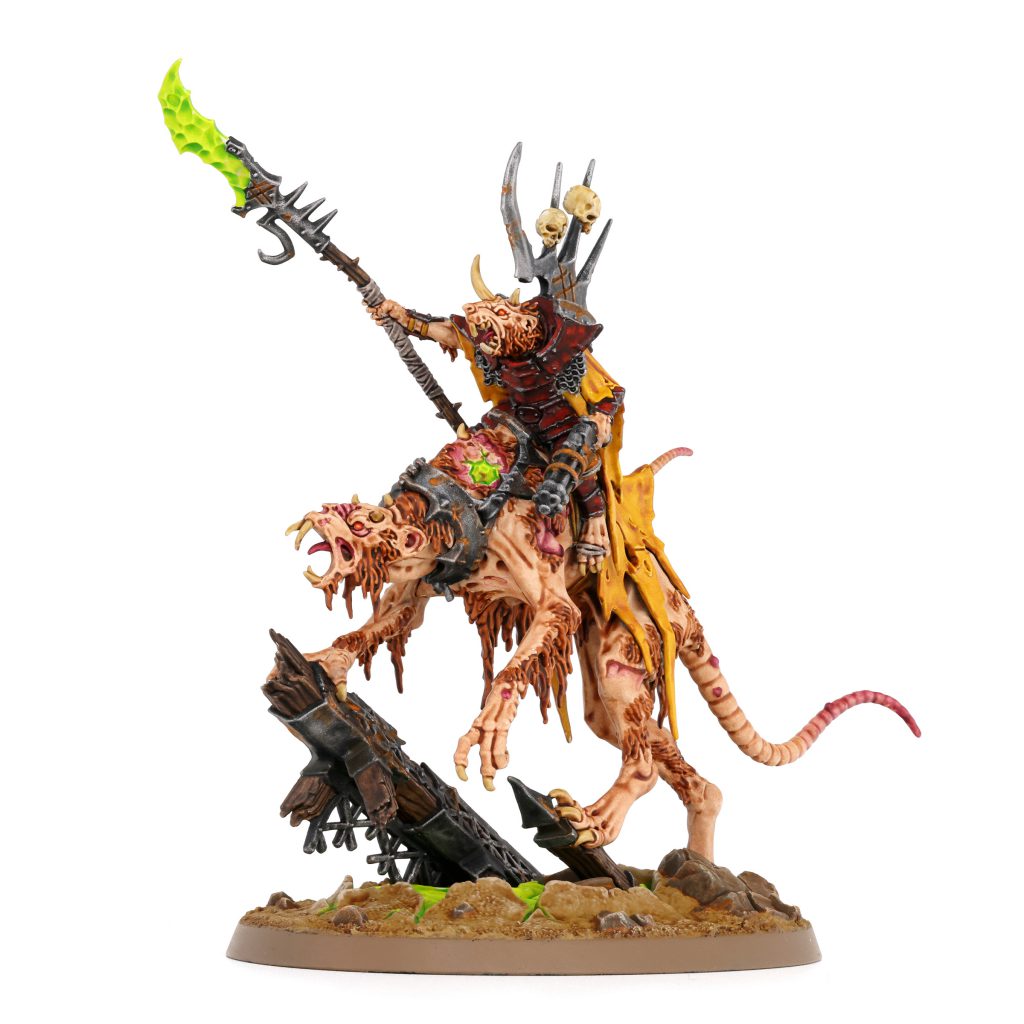
Final Thoughts
Marchettus: Overall this is a pretty simple Generals Handbook that picked a few missions that everyone liked and played at events in the past. Unlike some other packs there isn’t a battleplan that will just be complained about so much and ignore at events; such as missions that restrict set-up, don’t allow visibility, or have wizard towers, are a lot of fun to play.
Bair: Like the majority of fourth edition I’m pretty positive about this handbook. It’s not very heavy handed at all, I really like the Honour Guard being done during deployment so you can pick something that will definitely be useful in that game; being stuck with a choice during list building because you stumbled across a skew army on the other side of the table never feels good! Cannot wait to play a lot of this with all of my armies. Hell yeah.
Have any questions or feedback? Drop us a note in the comments below or email us at contact@goonhammer.com. Want articles like this linked in your inbox every Monday morning? Sign up for our newsletter. And don’t forget that you can support us on Patreon for backer rewards like early video content, Administratum access, an ad-free experience on our website and more.
